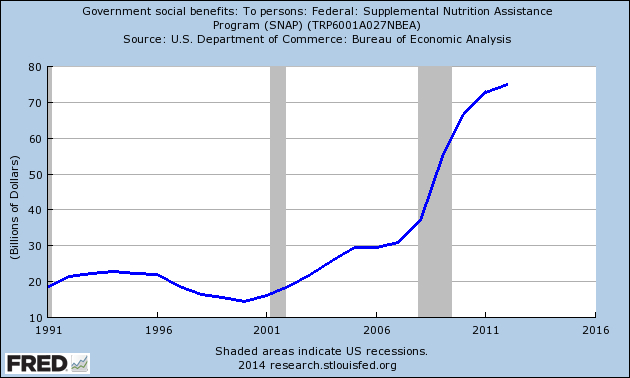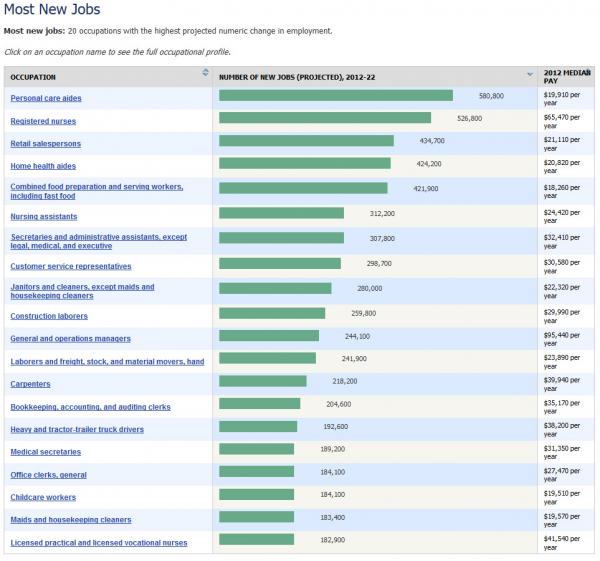The EBT recovery – Food stamp cuts impact Wal-Mart: The consequences of a low wage recovery create a larger group of Americans living food stamp to food stamp.
- 0 Comments
This recovery is the most lopsided recovery the US has faced in more than a generation. Wal-Mart recently announced a big hit to their bottom-line because of the recent cuts to the nationwide food stamp program. Over 47 million Americans now depend on food stamps to get by on a monthly basis to feed their families. In reality, these are debit cards that are automatically refilled on a monthly basis causing queues to form at some Wal-Marts on the last day of the month at midnight. This is a massive market. In fiscal year 2013 over $76 billion in food stamps were issued. This has also led to a mini renaissance in stores like Family Dollar and the 99 Cents Store. Even these low priced giants have faced tougher challenges as the nation’s poor get even poorer. There doesn’t seem to be any major retrenchment on the number of food stamp participants. How can that be if the employment figures are supposedly looking so rosy? The issue of course is that many of the new jobs have come in the form of low wage work. Many food stamp recipients are actually employed and are part of the working poor. When Wal-Mart takes a hit because of a cut in food stamp benefits you know that this recovery is barely treading water.
Wal-Mart takes a hit on food stamp benefits    Â
Wal-Mart for better or worse provides some of the lowest prices amongst big retailers. So when this giant confirms that the cut in food stamps is impacting their sales it is worth listening:
“(CNN Money) The cut in food stamps went into effect Nov. 1. Food stamps had been increased during the height of the recession, but that expansion expired without Congressional action.
The expiration of the program saved the government $5 billion.
More cuts in food stamp funding could be on the way. A bipartisan deal on a new farm bill reached earlier this week could trim $90 a month in benefits for 850,000 food stamp recipients, saving the government nearly $1 billion a year.â€
This is a big deal considering that we are still near a peak in food stamp usage:
Source:Â SNAP
It is hard to say whether the numbers would be higher if it weren’t for the government pulling back on food stamp funding. Fiscal year 2014 started in October 2013 so we’ll likely have a better sense in later reports but Wal-Mart is probably a leading indicator on the nation’s poor. Food stamps have provided a Band-Aid for millions in terms of not turning this Great Recession into the next Great Depression. However this should not be seen as some kind of endorsement for the recovery. It is hard to call this a recovery when the ranks of American poor only seem to be growing. The financial industry has done exceptionally well but very little has trickled down to the public.
The amount allocated to food stamp funding has only remained elevated in spite of the recession ending officially in the summer of 2009:
Part of this EBT recovery is because of low wage jobs being added. Why is this recovery so weak? Because many of the jobs being added are in the low wage sectors:
These are the top five job fields for growth as forecasted by the BLS:
 -1. Personal care aides
-2. Registered nurses
-3. Retail salesperson
-4. Home health aides
-5. Food preparation
 All of these carry annual salaries under $35,000. Try sending your kids to a good college, pay for healthcare, and out compete Wall Street to buy a home with that income. No wonder why a drop of $90 in monthly food stamps is enough to shake the bottom-line of the biggest retailer in our country. The growing income inequality in the nation is a big issue when a large part of the system is built on financial cronyism. Trying to force massive austerity on the poor and working class while giving out corporate welfare to the financially connected has resulted in this massive chasm between poor and rich. Don’t expect food stamp usage to pull back dramatically anytime soon short of the government continuing to cut benefits.
If you enjoyed this post click here to subscribe to a complete feed and stay up to date with today’s challenging market!


 If you enjoyed this post click here to subscribe to a complete feed and stay up to date with today’s challenging market!
If you enjoyed this post click here to subscribe to a complete feed and stay up to date with today’s challenging market!